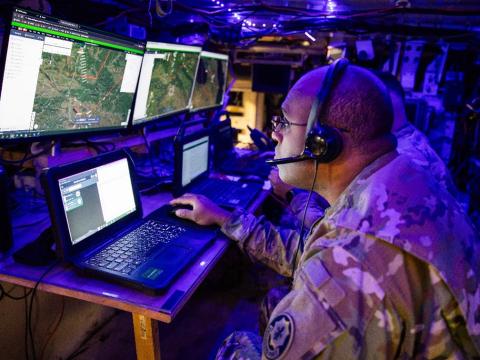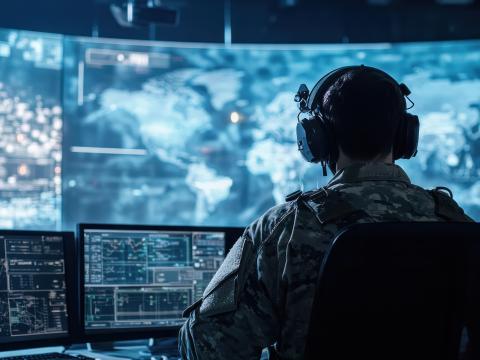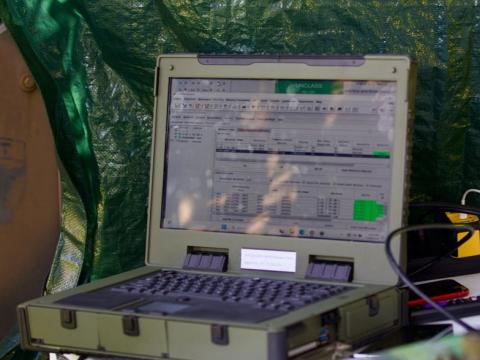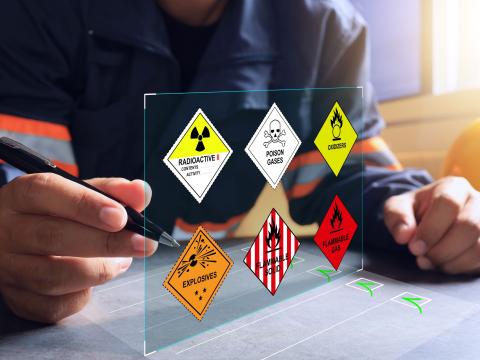President's Commentary: Salute to the Architects of the Army’s Future
I want to use this month’s column to acknowledge and honor all who play a role in building the Army’s future.
That includes everyone from the secretary of the Army and the Army chief of staff to the commander and staff at Army Futures Command, the cross-functional teams, the Cyber-Electromagnetic Activities teams, the Software Factory, the research labs and centers, program executive officers, program and project managers and all those who organize and participate in Project Convergence and other experiments and exercises.
It also includes soldiers who offer unvarnished and valuable feedback to various organizations developing technologies.
I apologize to anyone I might have missed. You are too many to mention. But please know that you are both valuable and valued. The service could not undergo this massive modernization effort—a once-in-a-generation undertaking—without the hard work, dedication and devotion to duty you each exemplify.
The Army strategy calls for a force “capable of conducting Multi-Domain Operations (MDO) as part of an integrated Joint Force in a single theater by 2028 and ready to conduct MDO across an array of scenarios in multiple theaters by 2035.” This historic modernization includes doctrine, organizations, training, materiel, leader development and education, personnel, facilities and policy within the Army, with joint force elements and with allies and partners.
On the technology side, the strategy prioritizes long-range precision fires, next-generation combat vehicles, future vertical lift, the network, air and missile defense, and soldier lethality. Ultimately, that could include long-range hypersonic weapons, extended-range artillery, precision-strike missile and a mid-range anti-ship missile, a mix of manned, unmanned vehicles and optionally manned vehicles.
While all the Army’s modernization focus areas are important, I’m emphasizing the network in this column because we at AFCEA will again be hosting TechNet Augusta in Augusta, Georgia, August 15-18. The conference title is “Designing and Deploying a Unified Network.”
This is one of our premier shows with a heavy focus on the network and the cyber arena, which is a core competency for both AFCEA and the Army. TechNet Augusta provides an opportunity to examine and explore issues related to the cyber domain and, like all AFCEA conferences, is designed to open the lines of communication and facilitate networking, education and problem-solving.
It also offers an opportunity to hear from some of those architects of the future Army, including program executive officers, program managers, the commanders of U.S. Army Cyber Command and the Army Cyber Center of Excellence, and officials from the Signal School.
Regarding the network, the Army has identified four primary efforts: the Unified Network, which includes an integrated tactical network, integrated enterprise network and unified network-enabling capabilities; a common operating environment; interoperability with the joint and international forces; and modernized mobile command posts.
The network, of course, is foundational to Army modernization. It supports all the other modernization focus areas and enables the speed, range and convergence required to achieve decision dominance and overmatch. The Army is delivering new capabilities and integrating data-centric operational concepts into Project Convergence experimentation and unit operational exercises in the Indo-Pacific and Europe.
It goes without saying that such a massive modernization endeavor poses challenges. And it is likely that some of the concepts, capabilities, tactics, techniques, technologies and procedures the Army is exploring during its campaign of learning will not pan out.
We don’t know yet what the Army of 2030 will look like. But I’m confident it will be a vastly superior force capable of defeating any adversary.
And that is why I want to acknowledge the architects of the Army’s future. We support you. We salute you. And we hope to see you all in Augusta.




Comments